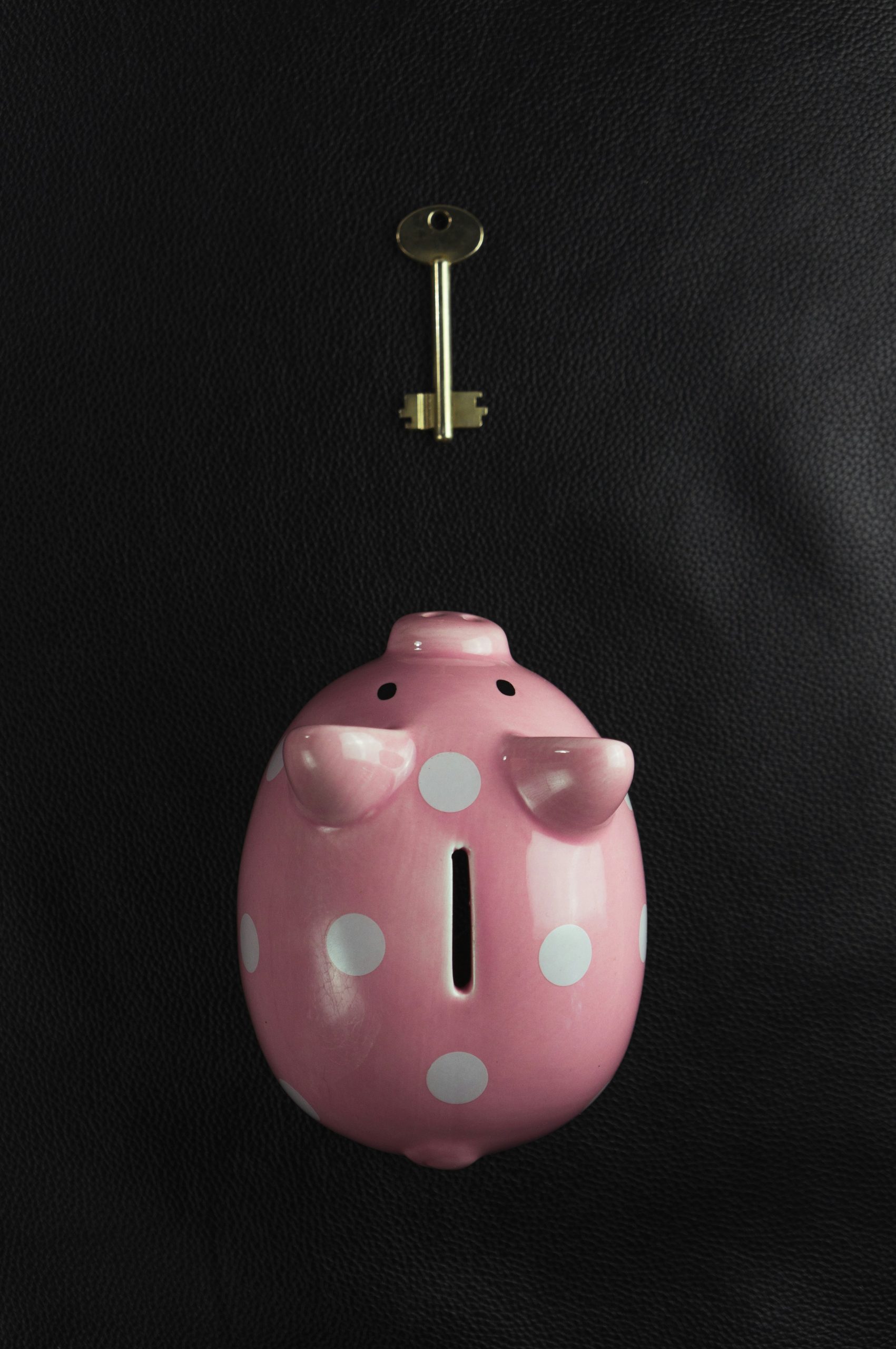Men Used to Have Wives. Now They Have Stylists.
Jay Buys’s wife changed his life with 10 words: “You know, you don’t have to just wear band T-shirts.”
Shirts from Nine Inch Nails and Thrice—for years, this was the bulk of Buys’s wardrobe. Were they awesome ? Yes. Did they make him look like the CEO of a successful web design firm? Not quite. “If I looked better, I would’ve felt better,” said Buys, 44, of San Diego. So he hired someone to teach him to look better.
For most, the term “stylist” brings to mind a celebrity dresser putting Timothée Chalamet in a bombastic red carpet outfit. But there is also an industry of white-collar stylists helping hapless corporate types find the right shirts and trousers for their daily lives.
For Buys, that guy was Patrick Kenger.
Kenger runs Pivot, a personal styling service, charging as much as $5,000 to remake your wardrobe. Kenger’s job is part Marie Kondo, part therapist and large part a personal shopper. He helped Buys retire the band tees at work, subbing them with Suitsupply blazers and Bonobos trousers.
The switch had a Superman-bursting-out-of-the-phone-booth effect on Buys. “I look like I know what I’m doing.” Strangers seem to think so, too. He was startled when a random 20-something at the grocery store saw his leather John Varvatos jacket and chirped, “I like your drip, bro!”
Today, strivers in tech, law and finance are wealthier than ever, but corporate dress codes have collapsed. The hoodie-clad billionaire has become a cliché. In the C-suite, Loro Piana sneakers have trounced dress shoes. Fleece vests have vanquished ties. At the same time, we’re in a new era of boardroom boasting.
Executives crow about their pay packages, their workout routines (looking at you Mark Zuckerberg!) and the rarity of their sneakers. To look like you haven’t bought new clothes since we all clutched BlackBerrys is to risk being lapped on the corporate ladder.
So, if you’re sitting there confidently dressed and accepting compliments on how well your pants fit, congrats! But there are many men who lack the skills to piece an outfit together. Stylists say their work has ballooned in the past decade as the range of options on what’s office “appropriate” has waylaid even confident corporate leaders.
“Men are very confused right now with the dress codes that have blurred the lines of formality,” said Jacci Jaye, a white-collar stylist in New York City for two decades, whose services start at $3,800 plus expenses. Jaye, who works solely with executives, said that many of her roughly 50 clients knew what they liked in terms of style, but had no idea how to achieve that look.
“I looked sloppy and I didn’t want to look sloppy,” said Raj Nangunoori, 36, a neurosurgeon in Austin. He spent working hours in scrubs, but out of them, he was adrift. “Even shorts, like I was never great at picking out shorts,” Nangunoori said.
Around a year ago, he googled in search of a stylist and hired Peter Nguyen, a former menswear designer turned $10,000 stylist. Nguyen’s entrepreneur- and tech-type clients are long on money, short on time and scant on clothing knowledge.
Nguyen’s first step is a lengthy questionnaire: What music do you listen to, what are your hobbies, where do you vacation? “I view my clients like they’re characters in a movie,” he said. They give him their background and Nguyen’s job is to outfit that character.
The pair landed on a neat framework for Nangunoori’s new look: What would Ryan Reynolds wear? Prosaic tees were swapped for polo-neck sweaters and James Perse chinos were tailored to fit properly. Nguyen got Nangunoori into a pair of Common Projects minimalist $500-ish sneakers. Most importantly, he convinced him to ditch his shopping mistake paint-splattered jeans.
“I can’t pull off what Travis Scott’s wearing,” said Nangunoori, relaying all his hard-bought wisdom.
Like working with a trainer, some clients are wary of admitting they enlisted a fashion guru. One CEO I spoke with who hired a stylist told his business partner he had done so, only to be mocked. After that, he decided “I’m not talking to anyone.”
“I never had my own confidence in going shopping and buying suits or dress clothes or even my weekend stuff,” said Nate Dudek, 42, an executive at a software company living in East Hampton, Conn. A “technology nerd,” Dudek wasn’t born with a strong visual sense. “That goes from everything from picking a wall color in my house to the way I dress.” His tees-and-jeans wardrobe was as spicy as a glass of milk.
In 2022, about one year before co-founding his own company, Dudek “set out to invest in myself” by hiring Cassandra Sethi, a New York stylist behind the company Next Level Wardrobe whose services currently start at $5,500. Dudek’s wife, who has “killer style” and occasionally shopped for him, took some warming up to the idea. “She was like, ‘Why? I’m so good at buying you clothes!’”
But Dudek wanted an objective outside advisor—someone who didn’t know him as intimately as his wife—to overhaul his closet. (His wife has come around, and is relieved to not be his unpaid personal shopper.)
He never even had to meet her in person. Sethi shipped him boxes of clothes and over a three-hour Zoom session they deduced what suited him best. The transformation, Dudek said, “was fairly obvious.” Colleagues commented that he was carrying himself differently in his new gray Ted Baker blazer, and Save Khaki United’s trim tees. “I felt it too,” he said.
It is a cliché—but a factual one—that in many relationships, the wife or better-dressed husband is the begrudging fashion consultant. Supreet Chahal, a personal stylist in Oakland specialising in tech guys, says many clients come in saying “my girlfriend tried to help me, my wife tried out on me, but she keeps dressing me the way she wants me to look.”
Marco Rodriguez’s former girlfriend didn’t shop for him, but did steer him towards Nguyen a few years ago. “She was like, ‘Hey listen, I know you hate shopping,” said the 39-year-old musician and entrepreneur in Austin.
And oh, he did. Rodriguez could never find pants that fit his “interesting physique.” When he needed new clothes, he had to force himself to buy them. His style was directionless. “ I knew what I wanted but I just didn’t know how to get there.”
With Nguyen’s assistance, Rodriguez landed on a sort of “Soho boho, I hate to say rockstar” look of low-key Justin Theroux-style leather jackets, Chelsea boots and pieces from Parisian label Officine Générale. The experience “got me out of my comfort zone,” Rodriguez said.
The mindlessness that comes from working with a stylist is enticing to efficiency-obsessed tech workers. “I don’t want to spend a lot of time thinking in the morning,” said Michael Peter, 53, a principal architect at Google in cloud technology. Previously, he dressed like your standard tech worker—jeans, tennis shoes, the odd Batman tee—but a lightbulb went off during one meeting when he watched a better-dressed colleague take charge.
“He walked in the room, he had gravitas,” said Peter. Striving for that same effect, he hired Sethi of Next Level Wardrobe. She directed him toward a “refined elevated casual look” of slender-but-stretchy Vuori pants (which accommodate his gym-rat legs) and James Perse polos. Rather than his girlfriend telling him what to buy, he says, she’s stealing his clothes “all the time.”
To be sure, all of this comes at a cost. Businessmen I spoke with view the hefty fees as an investment, like renting a well-appointed office.
“The cost didn’t faze me a bit,” said Aaron Preman, 48, who owns a roofing company in San Diego, and hired Kenger at around $3,500.
“He taught me a lot in a short amount of time,” Preman said. He discovered that wintery colours suit his olive complexion and that he really likes Theory suits and Zegna ’s $990 triple-stitch sneakers—he now owns several pairs. The cost of everything—the guidance, the clothes—has been worth it to Preman. “He could’ve told me $10,000 and I would’ve said, ‘Okay, when are you coming over?’”
 Copyright 2020, Dow Jones & Company, Inc. All Rights Reserved Worldwide. LEARN MORE
Copyright 2020, Dow Jones & Company, Inc. All Rights Reserved Worldwide. LEARN MORE
This stylish family home combines a classic palette and finishes with a flexible floorplan
Just 55 minutes from Sydney, make this your creative getaway located in the majestic Hawkesbury region.
If you’re looking to secure a home loan, you might want to consider these expert tips…
No matter whether you’re a first home buyer or a seasoned investor, entering the property market right now, in whatever capacity, is a tricky task thanks to high interest rates and a super competitive market across the board.
With Google searches like ‘how much deposit do I need to buy a house’ and ‘how to get a home loan’ currently trending, there’s one question potential buyers should be asking, as well: ‘what are the things to stop doing before applying for a home loan’.
Barbara Giamalis, a mortgage broker at Tiimely Home, has over 25 years of experience on the matter, and says there are certainly some factors to consider when applying for a home loan that can better your chances of success.
“There’s no right or wrong time to purchase a home; it all depends on every person’s financial situation, but you must ensure you’re comfortable paying back the loan based on your personal financial circumstances,” said Ms Giamalis.
“The number one question I’m asked is, ‘how much can I borrow?’, but there’s a huge difference between what people can borrow now in comparison to rates. By enacting some of these small tips below, it might just be the difference between getting approved or denied for a home loan.”
Below, Ms Giamalis lists five things you should consider stopping if you’re planning to apply for a home loan. And with predications of lower interest rates coming into play this year, there’s never been a better time to get on top of the home loan race.
—
1. Consider cancelling your credit card
This is a simple one. Typically, if you’re looking to borrow more money for a higher loan, it’s wise to close any credit card accounts you have open. Contrary to popular opinion, you definitely don’t need a credit card to build your credit score to get a home loan.
“If you’ve got credit cards, try and pay them off and cancel them before applying for a loan because it gives you greater borrowing power,” said Ms Giamalis.
“You don’t need a good credit score through a credit card to get approved for a home loan as your credit rating is what it is. If you’re a first-time borrower and never had a loan, your rating won’t be great, it might be around 700, but it’s better than having 800 with two credit cards.”
Typically, a credit card rating is calculated from your credit report, which is essentially a history of your credit card actions. It’s calculated based off your line of credit (the amount you have borrowed), your credit application history, and whether you have paid your debts in time. Your score will be highlighted between zero to 1,200; the higher the score, the better your odds are of getting a loan. The lower your score, riskier you present to potential lenders.

2. Stop using ‘Buy Now, Pay Later’ schemes
We’ve all been there. ‘Buy Now, Pay Later’ services present as extremely attractive payment alternatives when shopping online. But therein lies the danger; such services rely on its customers not making repayments in time.
And if you’re considering applying for a home loan, it’s wise to avoid using such services all together.
“If an applicant opts to pay off purchases in increments, even interest-free payments, this could signal to some lenders that the applicant may not be financially stable,” said Ms Giamalis.
“Most lenders will look at the living expenses of an applicant. If an applicant is using ‘buy now, pay later’ services more than what they have in their savings, this could be a red flag and lenders could question whether they can afford a loan.”
Services like Afterpay also have the right to report any missed payments on your credit history, which could definitely have a negative impact to your credit score.
3. Don’t put off saving for future mortgage repayments
Before applying for a home loan, a good indication of whether you would be able to afford the monthly repayments on your mortgage is demonstrating the ability to save the amount. This, along with saving for your ten or 20 percent deposit, will put you in good stead for your home loan preparation, and will show lenders that you’re disciplined when it comes to finances.
“One of the best tips for young people, and one they can start doing now, is to start saving for their monthly mortgage payment before applying for a home loan as it shows dedication,” said Ms Giamalis.
Ms Giamalis adds that having a three-month saving history is a great way to prove this to potential lenders.
Here are some friendly financial tools to assist you along the way.

4. Stop gambling and making cash withdrawals
According to Gambling Statistics Australia, 6.8 million Australians participate in some form of gambling each year. This could include activities like buying a ticket in the lottery right through to using gambling apps and visiting casinos. This can present as an obvious red flag to lenders, who will take this into account when deciding to service a home loan application or not.
Another factor to consider is cash withdrawals. If you’re someone who is making regular ATM cash withdrawals per week or per month, this can be a problem as the potential lender can’t track where this money is going. Experts suggest it’s better to have purchases that are traceable.
“Large one-off purchases such as a couch, a new hot water service or a motor vehicle, won’t be taken into an applicant’s living expenses as it’s a one-off meaning the banks will look at that as a discretionary cost,” added Ms Giamalis.

5. Don’t hold onto student debt
One of the key considerations your mortgage broker or financial professional will consider in the home loan application process is paying out any debts you may have outstanding, such as your higher education debt.
It might seem obvious that paying off a HECS debt will strengthen your chances of obtaining a home loan, however, Ms Giamalis says many people often don’t factor in these debts.
“The Higher Education Loan Program (HELP) impacts your borrowing power. HELP debt is a liability that you need to declare in the home loan application process,” said Ms Giamalis.
“The impact of HECS on your ability to get a home loan may vary depending on your income level and the amount of your HECS debt. Seeking financial advice before deciding to pay off your debt is crucial.”
Many are not in the position to pay off their student loans immediately, so this point comes as an additional should you be in the position to do so. This also applies even in light of the Federal Government’s proposal to wipe a reported $3 billion in debt from three million Australians who have HECS debts through indexation changes, essentially capping indexation rate for loans. The proposal is designed to lend a hand in helping young tertiary educated Australians pay off their student loans.
—
This stylish family home combines a classic palette and finishes with a flexible floorplan
Consumers are going to gravitate toward applications powered by the buzzy new technology, analyst Michael Wolf predicts























